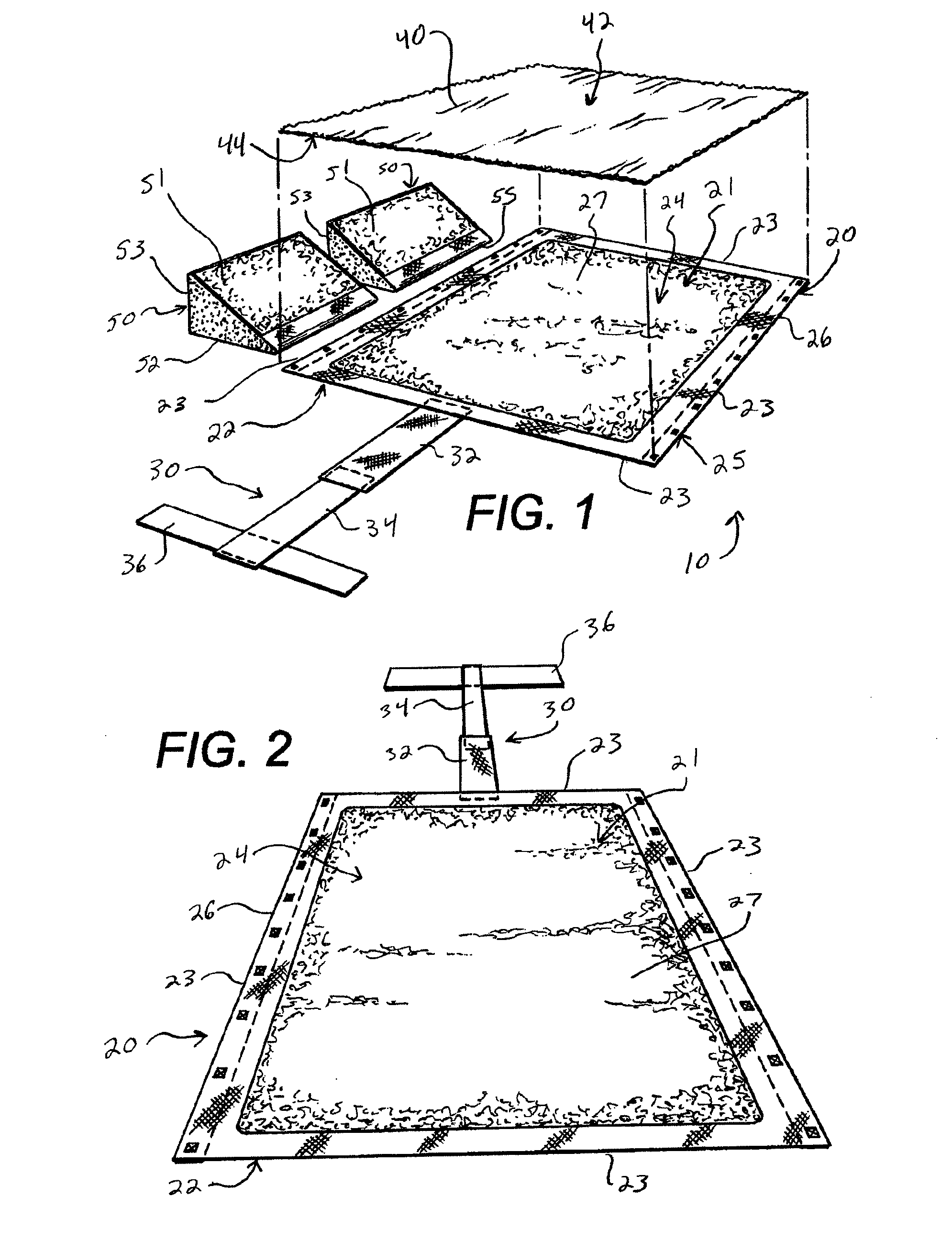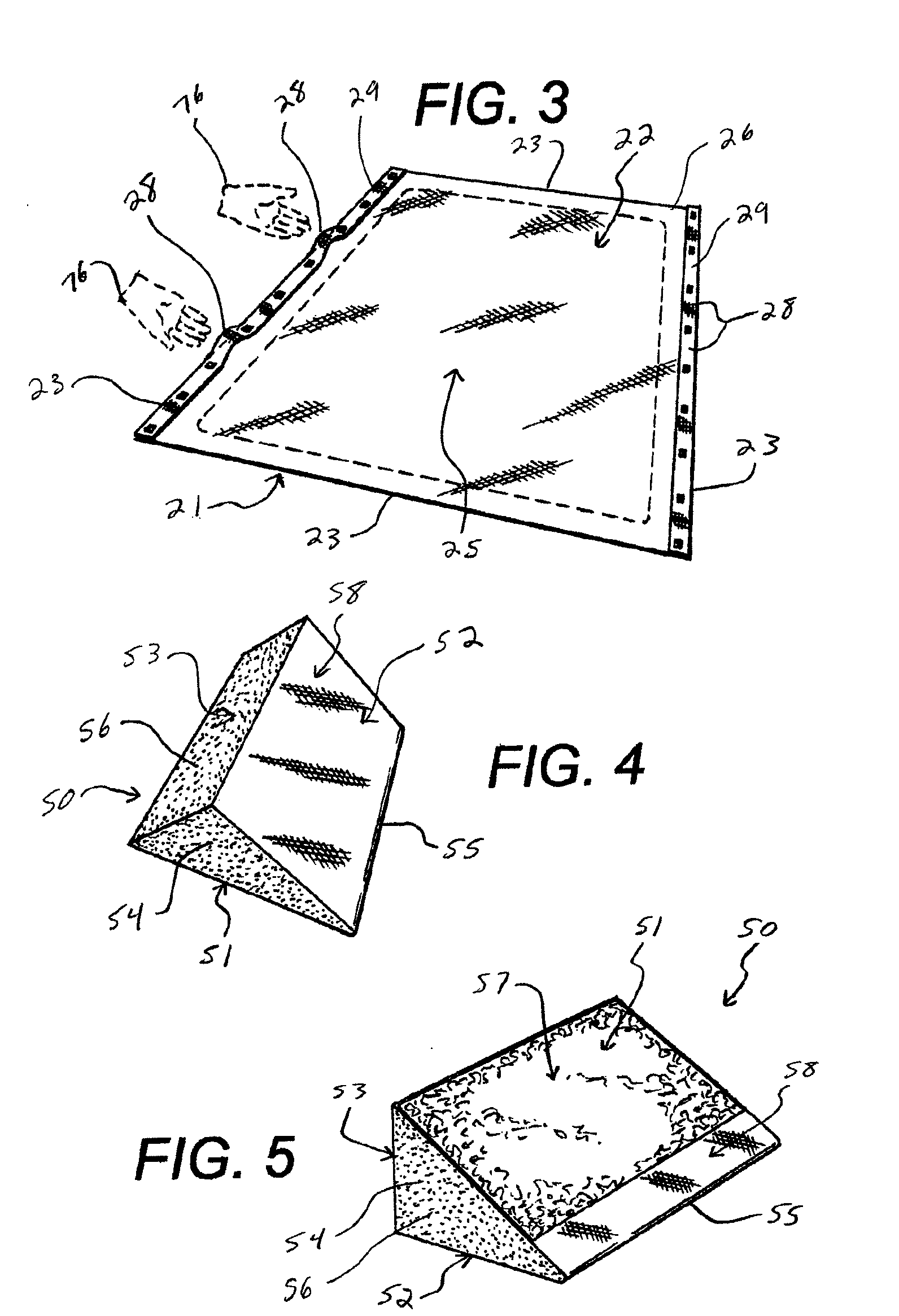Apparatus and system for turning and positioning a patient
a technology for turning and positioning patients, applied in wheelchairs/patient conveyances, bedsofas, transportation and packaging, etc., can solve the problems of pressure ulcers, pressure ulcers, pressure ulcers, etc., and achieve high friction surface, low friction, and high friction coefficient
- Summary
- Abstract
- Description
- Claims
- Application Information
AI Technical Summary
Benefits of technology
Problems solved by technology
Method used
Image
Examples
example
[0044]A 20″×20″ section of bed linen (60% cotton, 40% polyester, 200 threads / inch) was taped without slack to a table top. A 10″×10″ section of blue ripstop nylon was placed on top of the section of bed linen, then a 5 lb., 8″ diameter weight was centered on top of the ripstop nylon. A force gauge (Extech 475044, 44 lb·max, digital) was attached to the ripstop nylon and was used to pull / slide the weighted ripstop nylon across the surface of the bed linen. The peak force to slide was recorded. Similarly, a 20″×20″ section of tricot (warp knit tricot material that was brushed, napped, and / or sanded and treated with a hot melt adhesive) was taped without slack to a table top. A 10″×10″ section of an absorbent body pad was placed on top of the section of the tricot material (patient side facing up), then the 5 lb., 8″ diameter weight was centered on top of the body pad. The force gauge was attached to the body pad and was used to pull / slide the weighted body pad across the surface of th...
PUM
 Login to View More
Login to View More Abstract
Description
Claims
Application Information
 Login to View More
Login to View More - R&D
- Intellectual Property
- Life Sciences
- Materials
- Tech Scout
- Unparalleled Data Quality
- Higher Quality Content
- 60% Fewer Hallucinations
Browse by: Latest US Patents, China's latest patents, Technical Efficacy Thesaurus, Application Domain, Technology Topic, Popular Technical Reports.
© 2025 PatSnap. All rights reserved.Legal|Privacy policy|Modern Slavery Act Transparency Statement|Sitemap|About US| Contact US: help@patsnap.com



